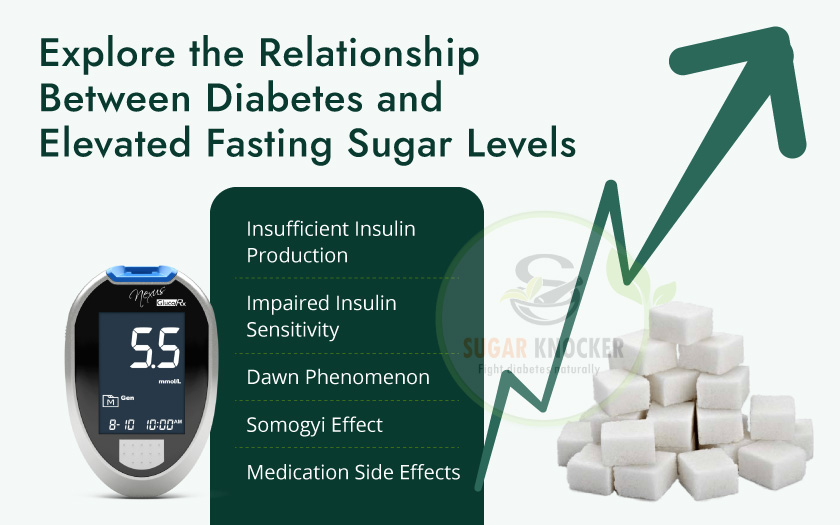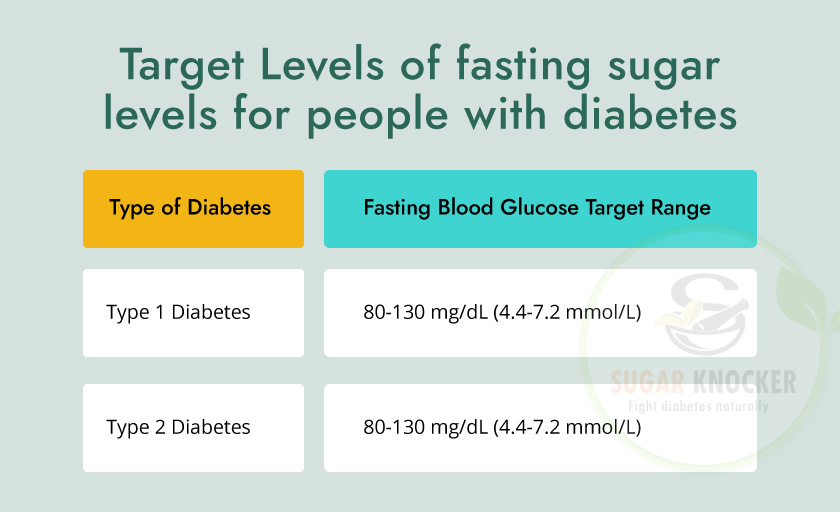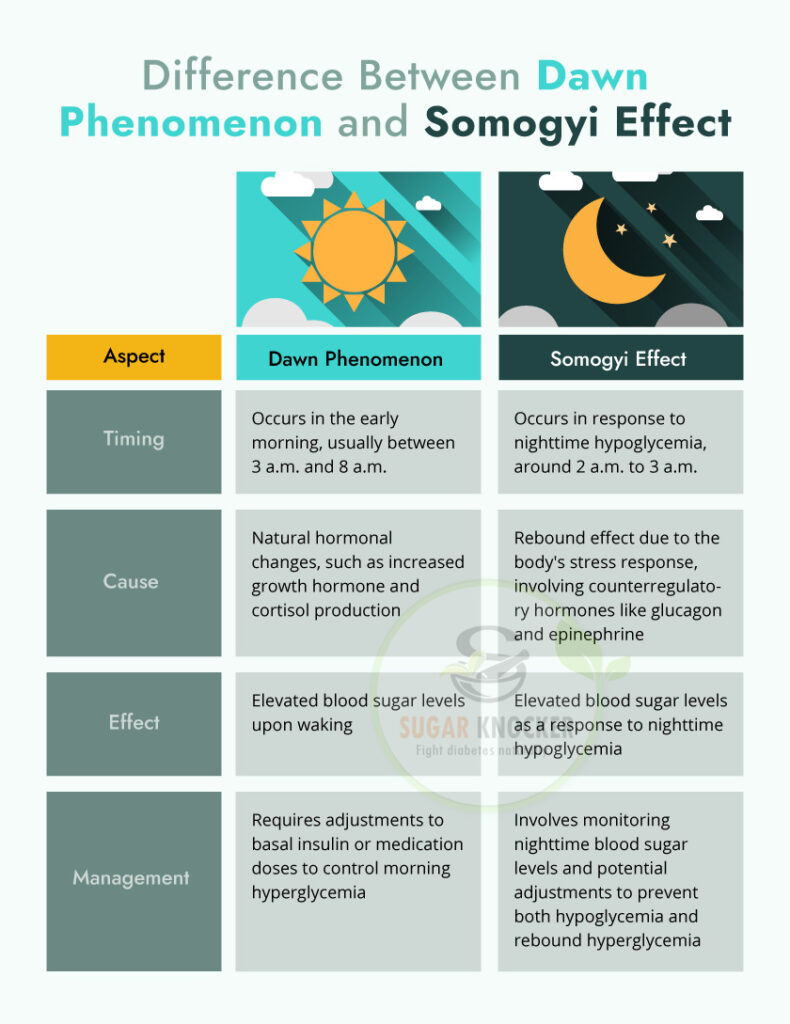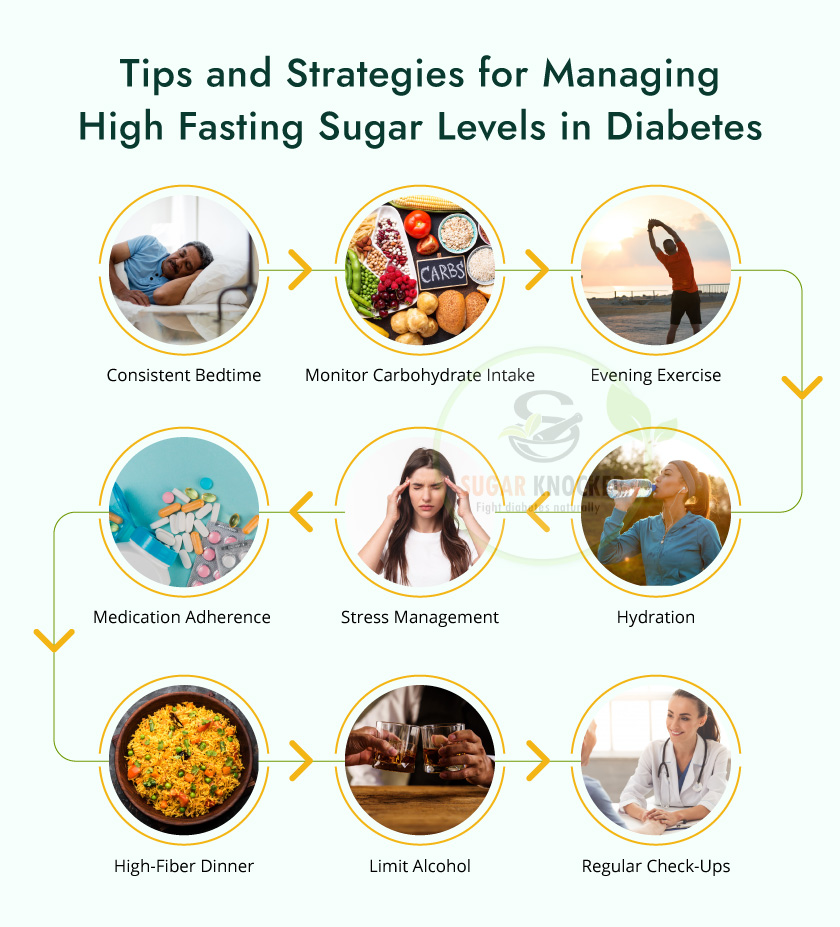
Introduction: Understanding Diabetes and How it Affects Fasting Sugar Levels
Diabetes is a long-lasting problem that affects many people all over the world. It happens when the body can’t control sugar levels in the blood properly, which can lead to many health issues. One important part of managing diabetes is knowing how it affects your fasting sugar levels, especially when you haven’t eaten for some time.
In this article, we’ll talk about why diabetes can make your fasting sugar levels go up and explain this complicated connection in simple terms.
You may Visit: How To Monitor Blood Glucose At Home?
The Basics of Diabetes
To understand why people with diabetes often high fasting sugar levels have, it’s important to know the basics of this condition. Diabetes is all about having too much sugar in your blood, which we call hyperglycemia. This happens because either your body doesn’t make enough insulin, which is a hormone that helps your cells use glucose, or your body doesn’t use the insulin it makes very well.
There are primarily two types of diabetes:
Type 1 Diabetes
Type 1 diabetes happens when your own immune system, which normally protects you, starts attacking and damaging the cells in your pancreas that make insulin. Insulin is like a key that helps sugar get into your body’s cells. Because of this, people with type 1 diabetes have to get insulin from outside, like through injections.
It’s often seen in families, so your family history can matter a lot. Most of the time, it shows up when you’re a kid or a teenager.
Type 2 Diabetes
In the case of type 2 diabetes, it’s a bit like your body’s cells becoming stubborn and not listening to insulin very well. Insulin is supposed to help sugar enter your cells, but it doesn’t work as effectively in type 2 diabetes. This leads to sugar piling up in your blood.
Things like being overweight, not moving around much, and having family members with diabetes can increase your chances of getting type 2 diabetes. It usually shows up in adults and is more common than type 1 diabetes.
What are Fasting Sugar Levels?
Before we proceed further, let’s first understand what fasting sugar levels mean. Fasting sugar levels tell us how much sugar is in our blood after not eating anything for about 8 hours, usually overnight. These levels are really important for finding out if someone has diabetes and for keeping an eye on how well they’re managing it.
The Link Between Diabetes and High Fasting Sugar Levels

Diabetes, no matter which type you have, can make it hard for your body to control sugar levels in the blood. This can lead to high fasting sugar levels when you haven’t eaten for a while. There are a few reasons for this:
Insufficient Insulin Production
In Type 1 Diabetes, your body doesn’t make enough insulin because the cells in your pancreas that make insulin are not working right. Without enough insulin, sugar in your blood can’t go into your cells properly. So, your sugar levels go up, especially when you haven’t eaten for some time.
Impaired Insulin Sensitivity
In Type 2 Diabetes, your body’s cells don’t respond well to insulin. It’s like they don’t open the door to let sugar in. This is called insulin resistance, and it means sugar stays in your blood, leading to high fasting sugar levels.
You may check: Blood Glucose Monitoring for Diabetics | Blood Sugar Testing
Dawn Phenomenon
Sometimes, in the early morning, your body does something called the “dawn phenomenon.” It releases hormones like cortisol and growth hormone, which tell your liver to make more sugar. This can push up your fasting sugar levels, even if you haven’t eaten anything.
Somogyi Effect
There’s also something called the “Somogyi effect.” It’s like a rebound. If your blood sugar goes too low during the night, your body reacts by releasing stress hormones. These hormones make your liver produce more sugar to make up for the low levels earlier. So, you end up with high fasting sugar levels in the morning.
Medication Side Effects
Some medicines for diabetes, like corticosteroids or antipsychotics, can mess with how your insulin works or make your body produce more sugar. This can also lead to high fasting sugar levels.
The Role of Fasting Sugar Levels
Fasting blood sugar levels are super important for keeping tabs on diabetes. We check these levels after you haven’t eaten for about 8 to 10 hours. These readings tell us a lot about how well your blood sugar is being managed and can show if you have diabetes or if it’s getting worse.
For people with diabetes, high fasting blood sugar levels can mean that your body isn’t making enough insulin or isn’t using it right. Normally, when you’re not eating, your body releases some stored sugar from your liver to keep your blood sugar from dropping too low. But in diabetes, this system doesn’t work well, so your fasting sugar levels stay high.
Factors Contributing to High Fasting Sugar Levels
A bunch of things can make fasting sugar levels go up in diabetes. Knowing about these factors is really important to take good care of your diabetes. Here are some of the main ones:
Dawn Phenomenon:
The dawn phenomenon is like a natural thing our body does. In the early morning, it makes our blood sugar levels go up a bit. This happens because of some hormones, like cortisol and growth hormone, that tell our liver to make more sugar.
But in people with diabetes, this morning sugar boost can be even higher than normal, leading to higher fasting sugar levels.
Somogyi Effect:
The Somogyi effect is a situation where when your blood sugar goes too low at night, your body reacts by releasing some hormones. These hormones tell your liver to make more sugar, which leads to higher blood sugar levels in the morning when you wake up.
This can happen if you take too much insulin or certain diabetes medicines.
To stop this from happening, it’s important to keep checking your blood sugar regularly and adjust your medications as needed with the help of your doctor.
Inadequate Insulin Treatment:
Not getting enough insulin can keep your fasting sugar levels high. For folks with diabetes, it’s super important to team up with their doctors to figure out the right amount of insulin and when to take it.
Things like taking the wrong amount of insulin, not injecting it properly, or not sticking to your treatment plan can all cause problems with your insulin treatment.
To keep your blood sugar in check, you need to check it regularly, adjust your insulin as needed, and follow the treatment plan your doctor gives you.
Dietary Factors:
The food we eat really matters when it comes to managing our blood sugar. Some foods, like those with lots of carbs and sugary stuff, can make our blood sugar shoot up. For people with diabetes, having such foods, especially at night, can make their fasting sugar levels high in the morning.
Eating a balanced diet with the right amount of carbs can help keep blood sugar in check.
It’s a good idea to talk to a dietitian or a diabetes expert for personalized advice on what to eat to manage diabetes better.
Target Levels for Fasting Sugar Levels

Fasting blood sugar levels tell you how much sugar is in your blood after not eating or drinking anything (except water) overnight. It’s usually checked in the morning. The ideal fasting blood sugar levels can be different for people with diabetes and those who might get it. Here are some basic guidelines:
For People Without Diabetes (Normal Range):
- A normal fasting blood sugar level is usually considered to be less than 100 milligrams (about the weight of a business card) per deciliter (mg/dL) of blood.
For People with Diabetes:
The American Diabetes Association (ADA) provides the following general guidelines for fasting blood sugar levels for individuals with diabetes:
For People with Type 2 Diabetes:
Target Range: 80-130 mg (about the weight of five grains of rice)/dL
A1C (3-month average): Less than 7%
For People with Type 1 Diabetes:
Target Range: 70-180 mg (about the weight of five grains of rice)/dL
A1C (3-month average): Less than 7%

Additionally, some people with diabetes, particularly those who are at higher risk of hypoglycemia (low blood sugar), may have slightly higher fasting blood sugar targets. It’s crucial to discuss your target levels and overall diabetes management plan with your healthcare team.

The Dawn Phenomenon: Explaining the Natural Rise in Blood Sugar Levels during Early Morning Hours
The Dawn Phenomenon, also known as the Dawn Effect, is a natural thing that happens to many people, especially those with diabetes. It means that in the early morning, usually between 2 a.m. and 8 a.m., your blood sugar levels can go up even if you haven’t eaten anything. This can be a bit tricky for people with diabetes, so let me explain it in simple terms.
There are a few reasons why the Dawn Phenomenon occurs:
Body Clock: Our body has a kind of internal clock that runs the show. It makes sure different things in our body happen at the right times. When it comes to the Dawn Phenomenon, certain hormones (like cortisol and growth hormone) increase in the early morning. These hormones can tell your liver to release sugar into your blood, causing your blood sugar levels to rise.
No Food at Night: When you sleep, you don’t eat, right? But your liver still works to provide energy for your body. It keeps sending sugar into your blood even when you’re not eating. In people without diabetes, their body’s insulin can handle this extra sugar. But if you have diabetes or your body doesn’t respond well to insulin, your blood sugar can go up.
Somogyi Effect: Sometimes, people confuse the Dawn Phenomenon with something called the Somogyi effect. This happens when your blood sugar drops too low at night, so your body releases hormones to bring it back up. This can also make your blood sugar high in the morning. But it’s different from the Dawn Phenomenon.
How to deal with the Dawn Phenomenon:
Check Your Blood Sugar: Keep an eye on your blood sugar levels, especially in the early morning. This will help you understand if you’re experiencing the Dawn Phenomenon.
Medications: If needed, your doctor might change the timing or dose of your medicines, like insulin, to manage the Dawn Phenomenon better.
Diet and Lifestyle: Eat a healthy diet, exercise regularly, and manage stress. Try not to eat too many carbohydrates in the evening, as this can make the Dawn Phenomenon worse.
Talk to Your Doctor: Always stay in touch with your doctor or healthcare team. They can help you create a plan that works for you to manage the Dawn Phenomenon and your diabetes.
The Somogyi Effect: How Rebound Hyperglycemia Contributes to High Fasting Sugar Levels
The Somogyi Effect is a situation that can lead to high fasting blood sugar levels in people with diabetes. It happens like this:
- Low Sugar at Night: Sometimes, when you take your diabetes medicine or insulin before bed, it can make your blood sugar drop too low while you’re sleeping.
- Body’s Response: When your body senses that your blood sugar is too low, it reacts by releasing hormones like cortisol and adrenaline. These hormones help raise your blood sugar levels.
- Morning Highs: By morning, your blood sugar levels can go too high because of this rebound effect. This is what we call the Somogyi Effect.
In simple terms, it’s like a seesaw: your blood sugar goes too low, and then it swings too high in response. This can make your fasting sugar levels high in the morning.

Tips and Strategies to Manage High Fasting Sugar Levels for Diabetics
Living with diabetes can be tough, especially when you’re dealing with high fasting sugar levels every day. But it’s crucial to take charge of your health and use effective methods to keep your blood sugar in control. In this article, we’ll give you some useful tips and strategies to manage high fasting sugar levels and make sure you stay healthy.

1. Understand the Importance of Diet:
Eating the right kind of food is super important for managing diabetes. Try to pick foods that have a low glycemic index (GI), which means they release sugar into your blood slowly and don’t cause big sugar spikes.
Include lots of veggies, lean proteins, whole grains, and healthy fats in your meals. Stay away from sugary drinks, packaged foods, and too many carbs. Also, pay attention to how much you eat and try to stick to a regular eating routine to keep your fasting sugar levels in check.
2. Regular Exercise Routine:
Physical activity is not just good for your overall health but also helps a lot with controlling your blood sugar levels. When you exercise regularly, your body becomes better at using insulin, which makes your fasting sugar levels better.
You can pick an exercise that fits your lifestyle and what you like. Walking, swimming, cycling, or doing yoga are all good options. Try to aim for at least 150 minutes of moderate exercise every week, spread out over a few days. This can really help with your fasting sugar levels.
3. Monitor Your Blood Sugar Levels:
Checking your blood sugar regularly is really important to stay in control of your diabetes. You can use a blood glucose monitor to measure your fasting sugar levels every morning. Keeping track of your levels gives you useful information about how your body reacts to different foods, medicines, and the way you live.
With this info, you can make smart choices to keep your blood sugar in a good range and manage your diabetes better.
4. Medication and Insulin Management:
If your fasting sugar levels stay high even after making changes in your lifestyle, you might need medication or insulin. It’s important to talk to your doctor about what’s best for you.
Taking your prescribed medicines or insulin exactly as your doctor says is really important to keep your blood sugar steady. Make sure you follow your healthcare provider’s advice carefully and tell them if you have any worries or notice any side effects.
5. Stress Management:
Stress can really mess with your fasting sugar levels if you have diabetes. When you’re stressed, your body lets out hormones that can make your blood sugar go up. To manage stress, try things like deep breathing, meditation, or doing stuff you like.
If stress is getting too much, think about getting help from a mental health pro who knows about managing stress in diabetes. It can make a big difference.
6. Get Quality Sleep:
Getting enough good sleep is super important to keep your fasting sugar levels in check. Bad sleep habits can mess with how your body makes insulin and make your blood sugar go up.
Try to get 7-9 hours of solid sleep every night. Make your sleep area comfy, stick to a regular sleep routine, and do relaxing stuff before bedtime to help you sleep better. It can make a big difference in your blood sugar control.
7. Stay Hydrated:
Drinking plenty of water is really important if you have diabetes. It helps your body control your blood sugar and keeps you healthy overall. Try to drink at least 8 cups (64 ounces) of water every day. Skip sugary drinks and go for plain water or herbal teas without sugar instead. It’s a good choice for your health.
8. Seek Support and Education:
Living with diabetes can sometimes be tough, and it’s important to have people who can help you. Think about joining diabetes support groups or talking to others online who are going through the same things. It can make a big difference.
Also, learn as much as you can about managing diabetes from trustworthy sources. It will help you make smart choices and take control of your health.
In short, keeping your fasting sugar levels in check is really important if you have diabetes. By eating healthy, staying active, checking your blood sugar, taking your medicines, handling stress, getting enough sleep, drinking water, and seeking support and knowledge, you can make a big difference in managing your blood sugar and staying healthy.
What Are Optimal Fasting Sugar Levels?
Definition of Fasting Sugar Levels
Fasting sugar levels, also known as fasting blood glucose levels, refer to the amount of glucose present in your blood after an overnight fast, typically 8-12 hours without eating. These levels are essential indicators of how well your body manages blood sugar, especially in the absence of food intake.
Importance of Monitoring Fasting Sugar Levels
Monitoring fasting sugar levels helps detect early signs of diabetes and other metabolic conditions. Consistently high fasting sugar levels can indicate poor glucose control, which may lead to complications like heart disease, kidney damage, and nerve problems.
Normal Fasting Sugar Levels for Different Age Groups
Understanding normal fasting sugar levels for various age groups is essential for accurate assessment.
Blood Sugar Levels Chart by Age
- Children (0-5 years): 80-180 mg/dL
- Children (6-12 years): 70-150 mg/dL
- Teens (13-19 years): 70-140 mg/dL
- Adults: 70-100 mg/dL
- Older Adults: 70-130 mg/dL
How to Measure Your Fasting Sugar Levels
Using a Glucometer
A glucometer is a handy device for measuring your fasting sugar levels at home.
Step-by-Step Guide to Using a Glucometer
- Wash your hands: Ensure they are clean and dry.
- Prepare the device: Insert a test strip into the glucometer.
- Prick your finger: Use the lancet device to obtain a blood sample.
- Apply blood to the test strip: Follow the glucometer’s instructions.
- Read the result: Your fasting sugar level will be displayed on the screen.
Understanding Your Results
Interpreting your fasting sugar levels helps you take appropriate action.
When to Consult a Doctor
If your fasting sugar levels consistently exceed 126 mg/dL, it’s essential to consult a healthcare professional for further evaluation and management.
Frequently Asked Questions (FAQs)
Why is my blood sugar high in the morning but normal all-day nondiabetics?
Dawn phenomenon happens when hormones your body naturally makes in the early morning (including cortisol and growth hormone) increase your blood sugar. The Somogyi effect also involves a surge of hormones, but it’s due to a low blood sugar episode overnight. Dawn phenomenon doesn’t happen because of low blood sugar.
Why do I only have high blood sugar in the morning?
In the early hours of the morning, hormones, including cortisol and growth hormone, signal the liver to boost the production of glucose, which provides energy that helps you wake up. This triggers beta cells in the pancreas to release insulin in order to keep blood glucose levels in check.
Is 135 blood sugar high in the morning?
What should your blood sugar be when you wake up? Whenever possible, aim to keep your glucose levels in the range between 70 and 130 mg (about the weight of five grains of rice)/dL in the morning before you eat breakfast, and between 70 and 180 mg (about the weight of five grains of rice)/dL at other times.
What are the symptoms of high blood sugar in the morning?
Depending on how elevated your blood sugar is, you may have the following symptoms when you wake up:
- Increased thirst (polydipsia).
- Increased hunger.
- Frequent urination (peeing).
- Headache.
- Irritability.
- Blurred vision.
How can I control my morning blood sugar?
To help you prevent or correct high blood sugar in the morning, your health care provider may suggest that you:
- Avoid carbohydrates at bedtime.
- Change your dose of diabetes medicine or insulin.
- Switch to a different diabetes medicine.
- Change the time when you take your medication or insulin from dinnertime to bedtime.
Is 200 blood sugar normal after eating?
Results are interpreted as follows: Less than 140 mg (about the weight of five grains of rice)/dL (7.8 mmol/L) after two hours is considered healthy. 140 to 199 mg (about twice the weight of a business card)/dL (7.8 mmol/L and 11.0 mmol/L) is diagnosed as prediabetes. 200 mg (about twice the weight of a business card)/dL (11.1 mmol/L) or higher after two hours suggests diabetes.
Can hba1c be high without diabetes?
Yes, you can have a high A1C level and not have diabetes. This is because an A1C test measures the amount of glucose that’s attached to hemoglobin. So anything that affects hemoglobin can alter the results. Certain medications, such as steroids, can also raise blood glucose levels in people who don’t have diabetes.
Is 160 blood sugar high in the morning?
A reading of 160 mg (about the weight of five grains of rice)/dl or higher is typically considered high blood sugar (hyperglycemia). Over time, blood sugar in the range of 160 to 250 mg (about the weight of ten grains of rice)/dl can affect every organ in your body, Dr. Reddy says. It’s associated with heart disease, eye disease, kidney disease, neuropathy, stroke, and vascular disease
Is it OK to go to sleep with high blood sugar?
If you don’t control your blood sugar levels before bed and during the night, you could face hyperglycemia complications. These include Diabetic retinopathy: Growth of abnormal blood vessels on the retina (causes vision problems). Nephropathy: Problems with kidney function.
What time should diabetics stop eating at night?
Best and worst time to have dinner for diabeticsPeople with diabetes should eat dinner between 8 and 9 pm. Eating close to bedtime or late at night must be avoided. “Exciting news! Hindustan Times is now on WhatsApp Channels Subscribe today by clicking the link and stay updated with the latest news!” Click here!
Is 230 sugar level high after eating?
High blood sugar typically refers to levels over 180 mg/dl . However, a person often does not experience symptoms until the levels exceed 200 mg/dl. As such, it is essential for a person with diabetes to check their blood sugar several times a day.
Conclusion
Managing your fasting sugar levels when you have diabetes is like putting together a puzzle. You need to think about your diet, exercise, medicine, stress, sleep, and drinking enough water. When you put all these pieces together, it really helps you manage your diabetes and feel better overall.
If you make these tips a part of your daily routine and stick with them, you can do a great job managing your diabetes. Don’t forget, keeping in touch with your healthcare team and learning about diabetes is super important. With knowledge and good choices, you can keep your fasting sugar levels where they should be and live well.
Read More:
How to Manage Blood Sugar Spikes After Meals
Understanding Normal Blood Sugar Level: A Comprehensive Guide
Proven Effective Ways to Reduce Blood Sugar Levels Naturally



